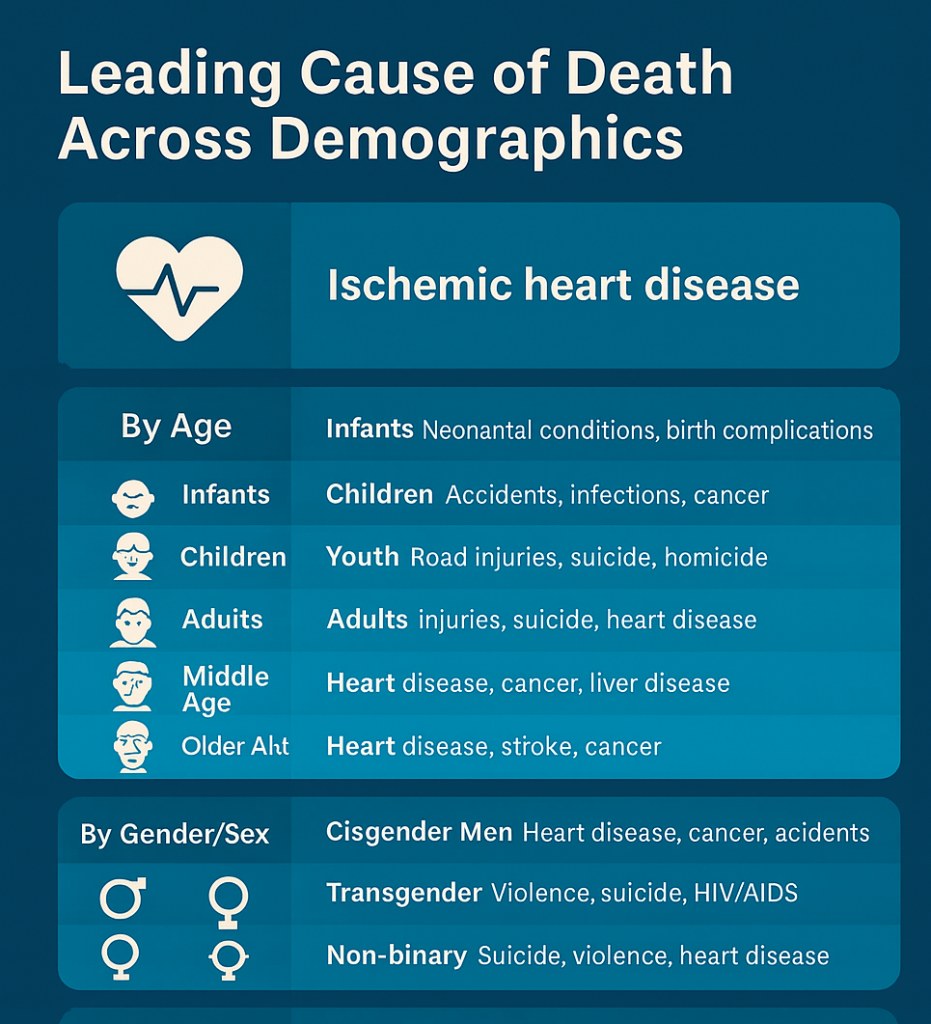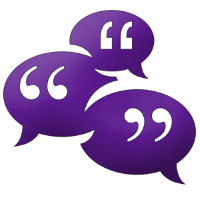
Leading Cause of Death: The Demographics by age, gender, and sex in general.

Related Post
Understanding Addiction: A Modern, Integrative PerspectiveUnderstanding Addiction: A Modern, Integrative Perspective
Abstract
Addiction is a complex, multifaceted phenomenon that has been described variously as a disease, disorder, syndrome, obsessive-compulsive behaviour, learned behaviour, or spiritual malady. Modern scientific understanding emphasises addiction as a chronic brain disorder shaped by neurobiological changes, learning, and social context. This article examines each conceptualisation and presents an integrated definition that aligns with current neuroscience, psychological, and public health evidence.
Conceptualising Addiction: Labels and Their Accuracy
No single label fully captures addiction’s complexity; each highlights certain truths while overlooking others.
Disease
From a medical perspective, disease is the closest match. Addiction involves persistent neurobiological changes in reward, stress, and self-control circuits, increases relapse risk over years, and shows substantial genetic vulnerability (~50–60%) (NIDA, 2018; Heilig et al., 2021). Treatments improve outcomes but rarely “cure” the condition. This framing is used by the American Society of Addiction Medicine (ASAM), NIDA, WHO ICD-11, and DSM-5-TR (as “Substance Use Disorder”) (NIDA, 2018).
Disorder
Disorder is also scientifically accurate and slightly less medicalised. DSM-5’s “Substance Use Disorder” captures behavioural, psychological, and biological criteria and recognises functioning and harm rather than framing addiction strictly as a lifelong disease (Heather, n.d.; Heilig et al., 2021).
Syndrome
Addiction may be described as a syndrome because it is a cluster of symptoms with behavioural and physiological manifestations, without a single causative factor. However, the term is too generic for practical use outside clinical texts (Blithikioti et al., 2025).
Obsessive and Compulsive Learned Behaviour
Addiction involves learning, habit formation, and compulsion through reinforcement of rewarding behaviours (Hyman, 2005; Hausotter, 2013). Yet describing it solely as learned behaviour ignores genetic predisposition, neuroadaptation, withdrawal, and social factors.
Spiritual Malady
Some mutual-aid traditions characterise addiction as a spiritual malady. While this may be meaningful for individuals, it is not scientifically explanatory: addiction can be adequately explained via biological, psychological, and social mechanisms (Lewis, 2017).
Modern Integrative Definition
The most accurate contemporary description of addiction is:
“A chronic, relapsing disorder of brain circuits involved in reward, stress, and self-control, shaped by learning, environment, and social context”.
This definition encompasses:
- Disease/disorder: medical accuracy
- Learned behaviour and compulsion: neuroscience and behavioural accuracy
- Social determinants: public health relevance
- Flexibility for personal or spiritual interpretations
In short, addiction is best understood as a bio-psycho-social condition that is treatable and sometimes reversible, rather than a deterministic, lifelong curse.
Neurobiology: Why Addiction Is Considered a Brain Disorder
Repeated substance use alters structural and functional brain circuits involved in reward, stress, motivation, memory, and self-control (Nwonu et al., 2022; NIDA, 2018). These changes can persist long after use stops, explaining why addiction is more than a matter of “bad habits” or weak will (NIDA, 2025).
Chronicity and Relapse
Addiction is often chronic and relapsing. Even after long periods of abstinence, cues and stressors can trigger relapse (Meurk et al., 2014; SAMHSA, 2023). Key regions implicated include the basal ganglia (habit formation), extended amygdala (stress), and prefrontal cortex (decision-making) (Kirby et al., 2024). Nevertheless, many individuals achieve stable remission, highlighting heterogeneity in clinical outcomes (Heilig et al., 2021).
Learning, Memory, and Habit Formation
Addiction exploits neural mechanisms of learning and memory: rewarding behaviours are repeated and consolidated into habits, with cues triggering compulsive responses even when the substance’s reward diminishes (Hausotter, 2013; Lewis, 2017). This intertwines biological disorder and learned behaviour.
Critiques and Limitations
Some scientists caution that framing addiction strictly as a brain disease is simplistic:
- Brain changes may resemble those from other motivated behaviours (Lewis, 2017).
- Many recover without formal treatment (Heilig et al., 2021).
- Social, environmental, and psychological factors are crucial to understanding addiction (Blithikioti et al., 2025).
Thus, while the disease model is powerful, it does not fully represent addiction’s heterogeneity or socio-psychological dimensions.
Implications for Treatment
Addiction is treatable, not simply curable. Interventions combining pharmacological and behavioural approaches, alongside social support, can foster long-term recovery (Liu & Li, 2018; Heilig et al., 2021). Like other chronic conditions, management — rather than elimination — is often the realistic goal (NIDA, 2018). Neural circuits can gradually readjust, particularly when environmental and personal factors support recovery.
Conclusion
Addiction is a learned, compulsive brain disorder with chronic potential, shaped by neurobiological, psychological, social, and environmental factors. Recognising addiction as both a disorder and a behavioural learning condition avoids extremes: it is neither an unchangeable fate nor merely a moral failing. This integrated perspective supports nuanced understanding, compassionate care, and effective treatment strategies.
References
Blithikioti, C., Fried, E. I., Albanese, E., Field, M., & Cristea, I. A. (2025). Reevaluating the brain disease model of addiction. The Lancet Psychiatry, 12(6), 469–474. https://doi.org/10.1016/S2215-0366(25)00060-4
Hausotter, W. (2013). Neuroscience and understanding addiction. Addiction Technology Transfer Center (ATTC) Network. https://attcnetwork.org/neuroscience-and-understanding-addiction
Heather, N. (n.d.). What’s wrong with the brain disease model of addiction (BDMA)? Addiction Theory Network. https://addictiontheorynetwork.org/brain-disease-model-of-addiction
Heilig, M., MacKillop, J., Martinez, D., Rehm, J., Leggio, L., & Vanderschuren, L. J. M. J. (2021). Addiction as a brain disease revised: Why it still matters, and the need for consilience. Neuropsychopharmacology, 46(10), 1715–1723. https://doi.org/10.1038/s41386-020-00950-y
Hyman, S. E. (2005). Addiction: A disease of learning and memory. The American Journal of Psychiatry, 162(8), 1414–1422. https://doi.org/10.1176/appi.ajp.162.8.1414
Kirby, E. D., Glenn, M. J., Sandstrom, N. J., & Williams, C. L. (2024). Neurobiology of addiction (Section 14.5). In Introduction to Behavioral Neuroscience. OpenStax. https://socialsci.libretexts.org/…/14.05:_Neurobiology_of_Addiction
Leshner, A. I. (1997). Addiction is a brain disease, and it matters. Science, 278(5335), 45–47. https://doi.org/10.1126/science.278.5335.45
Lewis, M. (2017). Addiction and the brain: Development, not disease. Neuroethics, 10(1), 7–18. https://doi.org/10.1007/s12152-016-9293-4
Liu, J. F., & Li, J. X. (2018). Drug addiction: A curable mental disorder? Acta Pharmacologica Sinica, 39(12), 1823–1829. https://doi.org/10.1038/s41401-018-0180-x
Meurk, C., Carter, A., Partridge, B., Lucke, J., & Hall, W. (2014). How is acceptance of the brain disease model of addiction related to Australians’ attitudes towards addicted individuals and treatments for addiction? BMC Psychiatry, 14, 373. https://doi.org/10.1186/s12888-014-0373-x
National Institute on Drug Abuse. (2018). Drugs, brains, and behavior: The science of addiction (Rev. ed.). https://irp.nida.nih.gov/…/NIDA_DrugsBrainsAddiction
Nwonu, C. N. S., Nwonu, P. C., & Ude, R. A. (2022). Neurobiological underpinnings in drug addiction. West African Journal of Medicine, 39(6), 874–884. https://pubmed.ncbi.nlm.nih.gov/36063103
Substance Abuse and Mental Health Services Administration. (2023). What is substance use disorder? U.S. Department of Health and Human Services. https://www.samhsa.gov/substance-use/what-is-sud
Acceptance and Commitment Therapy (ACT)Acceptance and Commitment Therapy (ACT)
I was recently browsing some of the units I completed for my counselling diploma – for revision. The human memory has not evolved to store, organise, categorise and recall all the large amounts of information we collect every day, nor is our memory always accurate. It’s important for counsellors and therapists to keep up to date with new approaches to counselling, and it doesn’t hurt to read over learned materials from college days. I thought I’d provide some learning about Acceptance and Commitment Therapy for readers.
Just to acknowledge the work of others, most of what is written below, I have retrieved and paraphrased from ACCEPTANCE AND COMMITMENT THERAPY Published by: Australian Institute of Professional Counsellors Pty Ltd.
Acceptance and commitment therapy, known as ACT (pronounced as the word ‘act’), is an approach to counselling that was originally developed in the early 1980s by Steven C. Hayes, and became popular in the early 2000’s through Hayes’ collaboration with Kelly G. Wilson, and Kirk Strosahl as well as through the work of Russ Harris. You can look them up on Youtube or Google if you’re interested in what they might have to say about ACT.
“Unlike more traditional cognitive-behaviour therapy (CBT) approaches, ACT does not
seek to change the form or frequency of people’s unwanted thoughts and emotions. Rather,
the principal goal of ACT is to cultivate psychological flexibility, which refers to the ability to
contact the present moment, and based on what the situation affords, to change or persist
with behaviour in accordance with one’s personal values. To put it another way, ACT
focuses on helping people to live more rewarding lives even in the presence of undesirable
thoughts, emotions, and sensations.”
(Flaxman, Blackledge & Bond, 2011, p. vii)
ACT interventions tend to focus around two main processes:
- Developing acceptance of unwanted private experiences that are outside of personal
control. - Commitment and action toward living a valued life (Harris, 2009)
In a nutshell, ACT gets its name from its core ideas of accepting what is outside of your personal control and committing to action that improves and enriches your life.
Cognitive Defusion is the process of learning to detach ourselves from our thought processes and simply observe them for what they are – “transient private events – an ever-changing stream of words, sounds and pictures” (Harris, 2006, p. 6). I think this component of ACT is incredibly beneficial if we practice it daily. I like to say, just like the function of the heart is to pump oxygenated blood around the body, one of the brain’s functions is to have thoughts. We can observe thoughts without taking them to mean more than what they are. Some thoughts are automatic, some are subconscious, and some are unconscious or preconscious beliefs that we consider to be true and factual and “rules” about how the world operates and how we have to operate in it. If someone is defused from their thought processes, these processes do not have control on the person; instead the person is able to simply observe them without getting caught up in them or feel the need to change/control them.
Acceptance is the process of opening oneself up and “making room for unpleasant feelings, sensations, urges, and other private experiences; allowing them to come and go without struggling with them, running from them, or giving them undue attention” (Harris, 2006, p. 7). Practicing acceptance is important because it encourages the individual to develop an ability and willingness to feel uncomfortable without being overwhelmed by it (Flaxman, Blackledge & Bond, 2011). It’s important to acknowledge that to accept something doesn’t mean we like it or have a passive attitude. It is to accept something exactly as it is and then we choose what to do with it. Think of the Serenity Prayer: Grant me the serenity to accept the things I cannot change, courage to change the things I can, and wisdom to know the difference.
Contact with the present moment is the concept of being “psychologically present” and bringing full attention to the “here-and-now” experience (Harris, 2009). I’d also argue that to psychologically present, we must also be aware of our physical body and the sensations within it and outside of it. Because we have the ability to think about the past and about the future, sometimes it can be difficult to stay in the present (Batten, 2011; Harris, 2009). Having contact with the present moment is essential because that it where we find out anchor and power. We have the ability to pay attention in a flexible manner to the present moment and connect with that experience rather than ruminate on past events or future possibilities (Lloyd & Bond, 2015). Some of you might say “What if I can’t stand the present moment?”. True. If you have extreme emotional experiences or have a history of trauma, it may be functional for you to use distraction or talking to someone when the present moment is “too much to take”. What we want to work towards is using healthy coping strategies in the present moment mindfully, instead of behaviours that no longer serve us.
Values, and identifying them, (i.e., what is important to the individual) is a central element of ACT because it assists clients to move in the direction of living and creating a meaningful life. One of the central goals of ACT is to help clients to connect with the things they value most and to travel in “valued directions” (Stoddard & Afari, 2014).
Committed action is the process of taking steps towards one’s values even in the presence of unpleasant thoughts and feelings (Harris, 2009). Behavioural interventions, such as goal setting, exposure, behavioural activation, and skills training, are generally used to create committed action. The ACT model acknowledges that learning is not enough, one must also take action to create change.
Self-as-context, or what I prefer to call “the observing self” or simply just our self-awareness, creates a distinction between the ‘thinking self’ and the ‘observing self’ (Harris, 2009). The thinking self refers to the self that generates thoughts, beliefs, memories, judgments, fantasies, and plans, whereas the observing self is the self that is aware of what we think, feel, sense, or do (Harris, 2009). “From this perspective, you are not your thoughts and feelings; rather, you are the context or arena in which they unfold” (Stoddard & Afari, 2014). Being aware of the observing self allows an individual to have a greater ability to be mindful and in the present moment, as they can separate themselves from the thoughts, beliefs, and memories they have.


